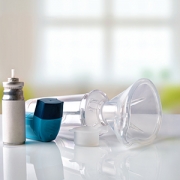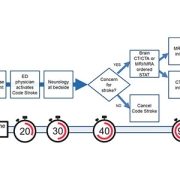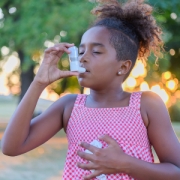Improving asthma care at community emergency departments

Through partnerships with community health care facilities, children suffering from severe asthma attacks can receive the type of state-of-the-art care championed by Children’s National.
Asthma is an exceedingly common pediatric disease, affecting nearly 7 million children in the United States, particularly in urban areas. Asthma is responsible for more than 775,000 Emergency Department (EDs) visits each year. However, the vast majority of these visits are to community EDs closest to patients’ homes, rather than to medical centers that specialize in pediatric care.
This fact could potentially lead to big problems for small patients, says Theresa A. Walls, M.D., M.P.H., Director of Emergency Department Outreach at Children’s National Health System. Nearly 70 percent of EDs in the United States treat fewer than 14 children a day, leaving many without the requisite experience or resources critical to effectively treat pediatric patients. Research shows that children seen for asthma in general community EDs are less likely to receive corticosteroid medications systemically — an essential first-line therapy during an asthma attack per National Institutes of Health guidelines — compared with children seen at pediatric EDs. Additionally in these general EDs, children are also more likely to receive unnecessary testing and treatment.
“In our experience, the emergency care of children with asthma in our area mirrors what has been found in national studies: Children are not treated as aggressively in community EDs. If we partner with them and get them to treat asthma as aggressively as we do, it would be a great thing for pediatric patients.”
That’s why when a nurse educator from a local community hospital’s ED contacted them to try to improve pediatric asthma care, Dr. Walls and Children’s colleagues jumped at the opportunity. “They were motivated participants,” she says. “It was a great way to start a partnership.”
The team worked with the community hospital’s ED to implement a pediatric asthma care plan known as a “pathway,” similar to the one currently in place at Children’s National, to ensure that children in the throes of an asthma attack receive evidence-based care that significantly decreases their chances of hospital admission or transfer to a specialty center.
The treatment pathway includes elements such as assigning each patient an asthma score — a number ranging from 1 to 10 that characterizes the severity of the patient’s asthma attack. The treatment plan also includes providing corticosteroids as quickly as possible to more eligible patients.
Effectively implementing this plan requires the efforts of a multidisciplinary team of providers and experts. Beyond the physicians, nurses and respiratory therapists who care for patients directly, this includes pharmacists to ensure proper doses of medications are available in child-friendly liquid forms and information technology specialists to revamp the hospital’s electronic charting system, automatically requesting an asthma score or recommending appropriate medication orders.
To gauge whether mimicking Children’s asthma pathway made a significant difference at the community ED, Dr. Walls and colleagues launched a study that was published online December 8, 2016, in Pediatrics. Comparing data collected for 19 months after the new guidelines were put into place with data from 12 months prior, the researchers made some promising initial findings. Following the pathway implementation, 64 percent of children ages 2 to 17 who arrived at the community ED with asthma symptoms received an asthma score. About 76 percent of these patients with asthma received corticosteroids after the pathway was in place, compared with 60 percent of comparable patients prior to the switchover. The mean time to corticosteroid administration dropped by nearly half, falling from 196 to 105 minutes. Additionally, Dr. Walls says, 10 percent of patients required transfer to another hospital after pathway implementation, compared with 14 percent before — another significant drop.
Dr. Walls notes that there is significant room for improving these metrics and overall asthma care at community EDs. The research team hopes to continue working with the first community hospital and expand their partnership to form a network of other local hospitals. By working together in a large collaboration, she says, hospitals can share resources and knowledge while learning from each other’s successes and mistakes.
“The more we can deliver this state-of-the-art care to the community,” she says, “the better, because that’s where most kids go.”










